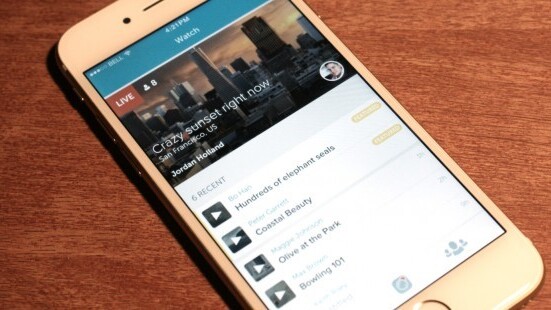
The more people start to get excited about an app, the more the instinct to push back starts kicking around in my guts. Last week, the arrival of Periscope kicked off a rash of ‘hot takes‘ on how live streaming is about to change news, change our lives, hell, change the whole goddamn world.
But it’s not going to. Certainly not in the hyperbole-drenched way  definitely won’t change the world. The world changes more slowly than we like to think. It hops forward in fits and starts.
definitely won’t change the world. The world changes more slowly than we like to think. It hops forward in fits and starts.
We need to start making a distinction between “news” and “source material” again. Some tweets aren’t news. They’re potential source material for news. A Vine clip is practically never news. As odd as it may sound, live video of a fire, an explosion or a protest isn’t the story, it’s a catalyst for a story. We need analysis and thought to be introduced before something become news. Just being present is not enough.
When I first started writing about technology, drooling over gadgets for Stuff magazine, we were still writing about the transformative possibilities of the Nokia N95. The iPhone had arrived but barely anyone had got their hands on it yet. Nerds were already obsessed with their smartphones, but the wider world was still a long way from picking them up.
Most people still don’t make the most of what their phones can do. The bulk of the world isn’t on Twitter. They don’t jump from service to service with all the loyalty of a toddler presented with a toy box.
The tech press is hyperactive. Most of the analysis around new apps or the latest initiative from Facebook is based on that excitable worldview. The grasshopper brains of the roiling, restless journalist hive mind: “We’re bored of Facebook so everyone must be.” “Teens love some new social app, so everything else must be over.” It’s a zero-sum worldview.
I have an abiding hatred for the shrugging kaomoji (¯\_(ツ)_/¯)– so beloved by my millennial colleague Owen – and for a long time I didn’t know why. But I’ve finally stumbled upon a theory – I think it’s because it typifies the careless, constantly shifting, distracted aspect of online culture to me, particularly around developments in tech: “There’s a new thing! What about the old thing? SHRUG.”
Exaggerated praise for a new app means hits. That’s why they’re rushed out so quickly. And then comes the backlash. The cycle is predictable, painful and ultimately pointless. I shouldn’t write this. I’m expected to be excitable and optimistic, greeting the unstoppable rush of progress with a string of widely grinning emoji.

But I can’t help but feel frustrated by the unrestrained glee. The desire of so many to just bang the drum for these companies without asking too many questions. Technology writers shouldn’t be carnival barkers for startups and their VC backers. They shouldn’t be so easily seduced by a nicely designed interface and the opportunity to indulge their narcissism.
Periscope and Meerkat have flooded our social streams with hours of awful new content, just like Snapchat and Vine before them. Very few people stop to think whether their thoughts are worth sharing. Just because you can, doesn’t mean you should. Livestreaming is compelling only when the thing you’re pointing the camera at is also compelling. 99 percent of broadcasts on both apps are an exercise in crowdsourced procrastination.

They will create stars, like Twitter and Vine before them, but those users are interesting because they’re unusual. Every new platform that works attracts people who truly get it. There was a whole class of comedians primed to take advantage of the restrictions imposed upon them by the 140 character limit and the 6-second video clip. The immediacy of low-friction livestreaming will do the same for creators who want to make new kinds of shows.
I know there’s great potential in Periscope, but I can’t bear the hype cycle of tech journalism anymore. By the time huge numbers are coming to a new service, writers have already become jaded and sloped to the next fad. They’ll stick around as long as people are paying attention to them.
That’s why Periscope and Meerkat have proved so irresistible to the press – they’re magic mirrors bringing attention so fast that it makes retweets and growing Twitter follower numbers look positively glacial. Journalists have never met a metric they can’t turn to vanity.
The alternative view: Periscope and live video are changing the internet forever
Get the TNW newsletter
Get the most important tech news in your inbox each week.




